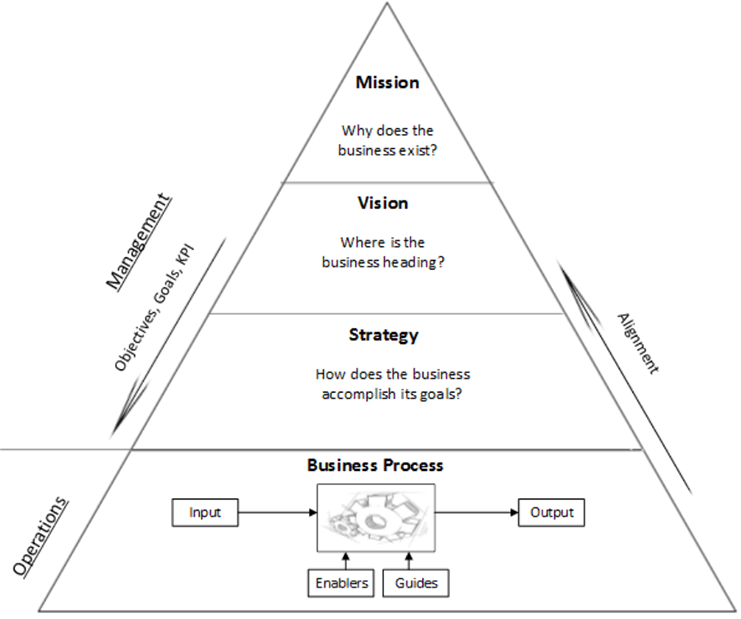People management is absolutely crucial for sustained business growth. And at a certain point, it’s the only upward progression available to skilled workers. That’s why coaching new managers must be a priority for all businesses—unfortunately, that’s rarely the case.
When companies talk about “coaching managers”, they too often veer into outcomes: be empathetic, maintain high performance, have diverse teams. These are all excellent results your managers should be working towards—but we haven’t described how your company actually coaches them towards better management. That’s exactly what we cover in this article.

Job #1 – Organizational understanding
As an individual contributor, the employee’s goal is to achieve a specific set of outcomes as directed by their manager. These outcomes are siloed: they don’t need to know anyone else’s goals or the broader company objectives in order to be successful.
As a manager, this is completely inverted. Their primary goal is to make all the disparate parts of the operation (i.e. their team members) work as optimally together as possible. It’s therefore crucial to fully understand how each role contributes to the overall success of the team. Not only that, but also how the team’s success aligns with the broader goals of the department or company.
Some important factors to consider include:
- The company business model and revenue drivers
- Specific company-wide goals and strategies, and current progress towards those goals
- Revenues and expenses relevant to their area
- Company-specific processes and strategies
- Company messaging and marketing strategies
How to coach organizational understanding
This should be straightforward. There’s no need to hire external consultants or build a comprehensive training program. There are two levels to this coaching:
- The company-wide elements
- The team-specific elements
The company-wide information can be a simple file containing descriptions of company goals, revenue drivers, explanation of the business model, messaging guidelines and so on. These can be built for all levels of seniority (new manager, department head, regional manager, director etc) and simply provided following any promotion.
The team-specific training should come from the new manager’s direct supervisor. They may not be aware of exactly how the team operates on a daily basis, but they’re fully immersed in how the team aligns with the rest of the department or company. They can advise on strategy, goals, and how the team’s success will be measured.
As well as creating a clean, high-level document, we encourage companies to make this person’s time available. 30 minutes or an hour every few weeks, for the first few months, could make all the difference in getting the new manager up and running.

Job #2 – HR knowledge
Businesses have dedicated HR functions for a reason: they are vitally important to long-term success. However, every manager should be familiar with the HR fundamentals as they pertain to their team. This could include:
- Company policies around salaries, pensions, and terminating contracts
- Performance reviews and promotions
- Conflict resolution and managing problematic employees
- Hiring practices, company culture and recruitment
- Rules regarding vacation, compassionate leave, and sick pay
What this boils down to is that when an employee comes to your new manager for advice, or with a problem, they can solve it for them. Perhaps more crucially, a robust understanding of HR allows managers to fight on their employees’ behalfs for things like raises and promotions.
How to coach HR knowledge
We recommend getting members of the HR team to put together a resource which can be shared with managers at different levels. It can be as simple as a PowerPoint presentation or Intranet page for new managers to reference.
Ideally this will answer many of the common questions around contracts, reviews, conflicts, hiring and time away from work (as listed above) as well as contact information for more complex problems. Even if it’s as simple as “call HR”, giving new managers this point of contact for when they’re lost or hesitant can be extremely reassuring.
New managers should read through this documentation and then reference it directly whenever HR-related issues arise.

Job #3 – Soft skills & emotional intelligence
Emotional intelligence (EQ) is now considered one of, if not the most important skills for managers. The ability to connect with team members, engage in emotionally complex conversations, manage conflicts and recognize the signs that team members are struggling—these are all hallmarks of an emotionally intelligent and empathetic manager.
Most of the key soft skills for managers—communication, listening, positivity, accepting responsibility, conflict resolution—are built around a high level of emotional intelligence. So what can your company do to coach new managers in EQ?
How to coach soft skills & EQ
The most effective approach is to provide gentle, continuous self-direction. It’s your role to encourage new managers to truly think about interactions and develop their own EQ.
Practicing empathy
Encourage new managers to proactively put themselves in their team members’ shoes. They should try to understand a situation from their perspective and understand their (potentially conflicting) standpoint.
A core skill of any manager is learning to put their own opinions and biases aside, and view any situation from the employee’s perspective. This is what empathy looks like in practice. New managers should dedicate real time to this, with notifications blocked and Do Not Disturb activated. It will take a lot of effort and they may not succeed the first few attempts, but adopting this empathetic mindset will get easier with time.
As an extension of this, learning to treat people how they want to be treated and to embrace working with those who don’t share their viewpoints are both key to developing a truly empathetic mindset.
Reflecting on feelings and impulses
With our chronic dependence on dopamine-rich content and stimulation, we rarely spend time alone with our thoughts. However, practising self-reflection and awareness is one of the keys to becoming a better manager.
Everytime we encounter an idea or problem, we have an instinctive reaction to it—the problem is that more often than not, our instincts can’t be trusted. We can get defensive and closed-off; unwilling to entertain ideas that contradict how we’re feeling in that moment. Motivated reasoning and confirmation bias can badly affect our goals as managers. Learning to recognize how feelings impact actions, and eventually learning to manage these feelings, is key to developing effective interpersonal skills.
Learning to effectively listen
While your new managers might be surprised by this one, it is super important that you teach them to become better listeners. This is a chronically-underdeveloped skill for the majority of workers, but it’s one of the keys to effective leadership and management.
So what does effective listening actually look like? Well there are 3 areas we encourage you to focus on when coaching your new managers:
- Put your agenda to one side—When you disagree with what someone is saying, your mind is probably running rampant with counter-arguments and angry noises; you need to learn to quiet down the noise. Try to practice empathy and really take in the conversation from their perspective before considering your own response.
- Respond once someone is done talking—Talking is not listening. It’s not just that interrupting someone is rude, it’s that you’re forming this counter-argument while they’re talking—this has the dual effect of giving us limited information (since we can’t listen and think of our response simultaneously) while also preventing our colleagues from fully fleshing out their thoughts.Wait until the person speaking has finished (or takes a natural break) then present your considered response.
- Listen to learn—This is a really important and under-utilized skill. Many of us listen out of politeness or, more likely, because we’re stuck in a conversation with nowhere else to go. We need to become more invested in our conversations.That’s why we tell new managers to listen to learn, to be surprised. Only by truly paying attention and proactively looking for new information can we engage in real dialogue.
Proactively managing all relationships
Building strong emotional intelligence gradually gives your managers the tools required to communicate better, build trust, give genuine praise for the achievements of others, and generally grow as a manager. However, this requires active effort: encourage managers to reflect on their relationships with each of their team members and consider whether there’s anything they could be doing differently to make things even more successful.

Job #4 – Mentorship
Connecting your new managers with highly experienced mentors is a fantastic, engaging way to build their experience. The way this usually works is by having a more experienced and senior employee devote a small amount of recurring time. This can be used for structured teaching, but more commonly it’s a chance to share ideas, blow off steam, and pick the brains of the more experienced leader.
The main benefit of mentoring is that it gives employees a valuable (if imperfect) resource for sounding ideas and finding their feet in a complex new role. When navigating the world of people management for the first time, it is hugely impactful to have an experienced ear on your side.
The relationship is also symbiotic: from the simple pleasure of “giving back” to more substantial personal development like improving their own leadership skills or becoming a more effective listener, mentors can also benefit directly.
How mentors can coach new managers
Most mentoring programs are informal. Rather than having scheduled objectives or classroom-like sessions, it’s more about having an open door if or when the new manager wants to engage.
What matters most is that for the majority of brand-new management-related tasks the manager is facing, their mentor has seen and done it all before. Their advice could save countless hours and serious stress on everything from HR bottlenecks to limiting “micromanagement” and even managing contract termination.
We also encourage organizations to get creative with mentorship partners. Mentors don’t need to be in the same geographic region or company division, and they certainly don’t have to be generations apart or even older than the mentee; what matters most is that they have skills, perspectives and experiences that the mentee can draw on, and that the door is always open.
Conclusion
Okay, that was a lot of instructional content. But what it all boils down to is using your company’s existing expertise to quickly and thoroughly get new managers up to speed. Notice we didn’t suggest hiring external contractors, enrolling in expensive training programs or buying extensive guides for external authors—our advice is all built around using people with your company’s DNA running in their veins.
By tapping into this expertise, your new managers aren’t shoehorned into doing things a certain way; rather, they’re able to forge their own path into management with guidance from those that have done it all before.
The transition from individual contributor to manager is a major one and you can’t underestimate the challenge or stress this invites. Being proactive about coaching your new managers into the role will reap massive benefits for them personally and the broader organization—and who wouldn’t want that?























































